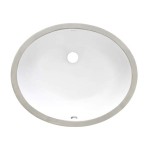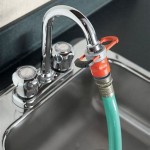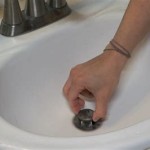Granite Sinks Vs. Stainless Steel: A Detailed Comparison
The kitchen sink is a central element in any home, experiencing daily use for food preparation, cleaning, and more. Selecting the right sink material is therefore a crucial decision that impacts both the functionality and aesthetics of the kitchen. Two popular options consistently considered are granite sinks and stainless steel sinks. Understanding the advantages and disadvantages of each material is vital for making an informed choice that aligns with individual needs and preferences.
This article provides a comprehensive comparison of granite sinks and stainless steel sinks, evaluating their durability, maintenance requirements, aesthetic appeal, cost, and other relevant factors. By exploring these aspects, readers can gain a clearer understanding of which material best suits their lifestyle and kitchen design.
Durability and Resistance
The durability of a kitchen sink is a primary consideration, as it directly affects its longevity and performance. Both granite and stainless steel offer distinct advantages in this area, but their resistance to specific types of damage differs significantly.
Granite sinks, typically composed of a mixture of granite stone dust and acrylic resins, are known for their exceptional strength and resistance to scratches, chips, and heat. The granite composite material is incredibly dense, making it less susceptible to damage from dropped objects or abrasive cleaning products. Granite sinks can withstand high temperatures without warping or melting, a significant advantage when dealing with hot cookware. The acrylic resin component enhances the material's flexibility, preventing cracking under stress. However, despite their overall durability, granite sinks can be susceptible to staining if liquids, especially highly pigmented substances like wine or coffee, are left to sit on the surface for extended periods.
Stainless steel sinks, on the other hand, are celebrated for their resistance to rust and corrosion. The presence of chromium in the steel alloy forms a protective layer that prevents oxidation. Stainless steel is also highly resistant to staining from most household liquids. However, stainless steel is more prone to scratching and denting compared to granite. Dropped heavy objects can easily create dents, and abrasive cleaners can leave unsightly scratch marks on the surface. The gauge of the stainless steel, which refers to its thickness, is a crucial factor in its durability. Lower gauge numbers indicate thicker steel, providing greater resistance to dents and bending. Higher gauge stainless steel sinks are generally less expensive but more vulnerable to damage.
The choice between granite and stainless steel in terms of durability depends on the specific priorities of the user. If scratch and heat resistance are paramount, granite sinks are the superior option. If resistance to rust and staining, along with a lighter weight, is more desirable, stainless steel sinks are a better choice.
Maintenance and Cleaning
The ease of maintenance is another critical factor in selecting a kitchen sink. Both granite and stainless steel require regular cleaning to maintain their appearance and prevent the buildup of grime and bacteria. However, the specific cleaning methods and products used differ for each material.
Granite sinks generally require daily wiping with a soft cloth and mild soap to prevent stains and mineral deposits. Regularly cleaning helps to remove any spills or food residue before they have a chance to penetrate the surface. For more stubborn stains, a mixture of baking soda and water can be used as a gentle abrasive cleaner. It is essential to avoid using harsh chemicals, abrasive scrub pads, or metal brushes, as these can damage the surface of the granite composite. The use of granite sealers, applied periodically, can help to protect the sink from staining and water damage. The type of sealer and the frequency of application will depend on the specific manufacturer's recommendations.
Stainless steel sinks are relatively easy to clean with a variety of common household cleaners. A mild dish soap and warm water are often sufficient for daily cleaning. For tougher stains or water spots, a stainless steel cleaner or polish can be used. It is important to wipe the sink dry after cleaning to prevent water spots from forming. Abrasive cleaners and scrub pads should be avoided, as they can scratch the surface. The direction of the grain in the stainless steel should also be considered when cleaning; wiping in the direction of the grain can help to prevent scratches. Periodically cleaning with baking soda can help to remove stubborn stains and restore the shine of the stainless steel.
In terms of maintenance, both granite and stainless steel sinks require consistent upkeep, but granite sinks may require slightly more attention to prevent staining. The accessibility of appropriate cleaning products for both materials makes them relatively easy to maintain with proper care.
Aesthetic Appeal and Design Options
The aesthetic appeal of a kitchen sink is a significant consideration for homeowners seeking to create a visually appealing and cohesive kitchen design. Both granite and stainless steel sinks offer distinct aesthetic qualities, but their compatibility with different kitchen styles varies.
Granite sinks are available in a wide range of colors and styles, allowing homeowners to coordinate them with various countertop materials and cabinet finishes. The natural stone appearance of granite lends itself well to both traditional and contemporary kitchen designs. Granite composite sinks can be molded into different shapes and sizes, offering greater design flexibility compared to stainless steel. The matte finish of granite provides a softer, more natural look that can complement a variety of color palettes. Some granite sinks even feature textured surfaces that mimic the look of natural stone, adding depth and visual interest to the kitchen. The availability of different bowl configurations, such as single-bowl, double-bowl, and even triple-bowl options, further enhances the design possibilities.
Stainless steel sinks offer a sleek and modern aesthetic that complements contemporary and minimalist kitchen designs. The shiny, metallic surface of stainless steel reflects light, creating a bright and airy feel in the kitchen. Stainless steel sinks are available in different finishes, such as brushed, polished, and satin, allowing homeowners to customize the look to their preferences. The simple and understated design of stainless steel sinks blends seamlessly with a variety of countertop materials and cabinet finishes. While stainless steel sinks are generally available in fewer color options than granite sinks, the versatility of the material allows it to be paired with a wide range of color schemes. Under-mount stainless steel sinks create a seamless transition between the sink and the countertop, adding to the clean and modern aesthetic.
The choice between granite and stainless steel in terms of aesthetic appeal ultimately depends on the desired style of the kitchen. Granite sinks offer a more natural and traditional look, while stainless steel sinks provide a sleek and modern aesthetic. The availability of different colors, finishes, and configurations for both materials allows homeowners to find a sink that complements their overall kitchen design.
Cost Comparison
The cost of a kitchen sink is a significant factor in the decision-making process, particularly for homeowners working within a budget. The price of both granite and stainless steel sinks can vary depending on the size, style, manufacturer, and gauge (in the case of stainless steel). However, there are general trends in the pricing of these two materials.
Granite sinks tend to be more expensive than stainless steel sinks, particularly those made from high-quality granite composite materials. The manufacturing process for granite sinks is more complex and labor-intensive, contributing to their higher cost. The cost of a granite sink can also vary depending on the color, finish, and size. Larger and more elaborate granite sinks will typically be more expensive than smaller and simpler models. While the initial cost of a granite sink may be higher, its durability and longevity can make it a worthwhile investment in the long run. The reduced need for replacements and repairs can offset the higher initial cost over time.
Stainless steel sinks are generally more affordable than granite sinks, making them a popular choice for budget-conscious homeowners. The cost of a stainless steel sink depends on the gauge of the steel, with lower gauge (thicker) steel sinks being more expensive. The size and style of the sink also affect the price. Larger and more elaborate stainless steel sinks will typically be more expensive than smaller and simpler models. While stainless steel sinks may be more affordable initially, their susceptibility to dents and scratches may lead to the need for repairs or replacements over time. Thicker gauge stainless steel sinks offer greater durability and longevity, but they also come at a higher price point.
The cost comparison between granite and stainless steel sinks reveals that stainless steel is generally the more budget-friendly option. However, the long-term cost-effectiveness of each material depends on its durability and resistance to damage. Homeowners should consider their budget, lifestyle, and aesthetic preferences when making a decision.
Sound Dampening Properties
The level of noise generated during sink usage can vary significantly depending on the material. The inherent properties of granite and stainless steel affect their ability to dampen sounds produced by running water, clanging dishes, or dropped utensils.
Granite sinks excel in sound dampening due to the natural density of the granite composite material. The dense structure effectively absorbs and minimizes vibrations, resulting in a quieter sink experience. The thick construction of granite sinks helps to muffle the sound of running water and clanging dishes, reducing the noise level in the kitchen. Many granite sinks also feature additional sound-dampening pads or coatings on the underside of the sink, further enhancing their noise-reducing capabilities. This feature is particularly beneficial for homeowners who value a quiet and peaceful kitchen environment.
Stainless steel sinks, on the other hand, tend to be noisier than granite sinks due to the thinner and more resonant nature of the material. The metallic surface of stainless steel can amplify the sound of running water, clanging dishes, and dropped utensils. However, many stainless steel sinks are now equipped with sound-dampening pads or coatings on the underside of the sink to help reduce noise levels. The effectiveness of these sound-dampening measures can vary depending on the quality and coverage of the pads or coatings. Thicker gauge stainless steel sinks also tend to be quieter than thinner gauge sinks due to their increased mass and density.
In terms of sound dampening, granite sinks offer a clear advantage over stainless steel sinks. The dense and naturally sound-absorbing properties of granite composite material make it a quieter option for homeowners seeking to minimize noise in the kitchen. The addition of sound-dampening pads or coatings to stainless steel sinks can help to mitigate some of the noise, but granite sinks generally provide a more effective solution.

Granite Sinks Vs Stainless Steel

Stainless Steel Sink Vs Granite Composite Chica Dragon
.jpeg?strip=all)
Granite Sink Vs Stainless Steel Futura Kitchen Sinks

Stainless Steel Vs Granite Composite Sinks Which Is Better

Stainless Steel Or Granite Sink Choosing A Kitchen

Granite Sinks Vs Stainless Steel

Granite Composite Vs Stainless Steel Sink Which Is Better Youtube

Granite Vs Stainless Steel Countertops What Is The Difference

Granite Composite Vs Stainless Steel Sink Which Is Better

Steel Or Granite The Best Kitchen Sink Materials Victorian Plumbing







